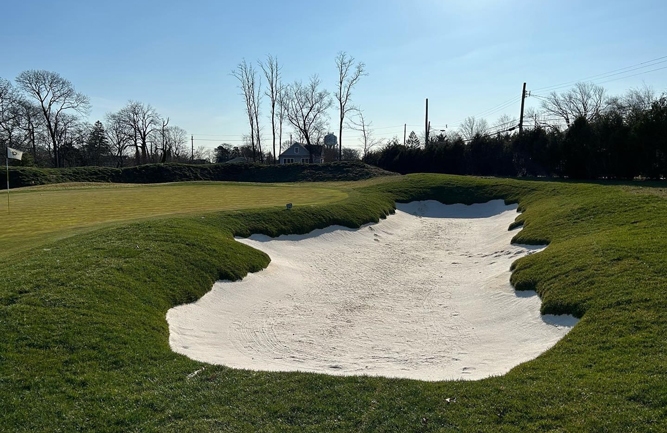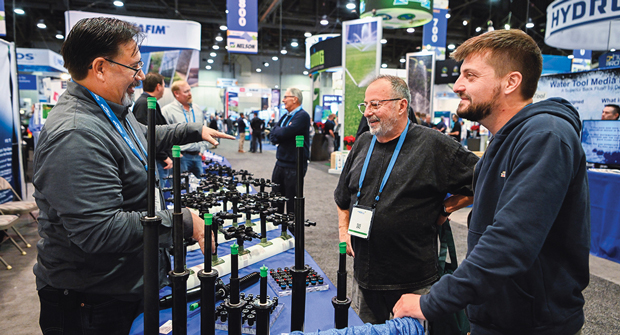A rushed bunker reno at Hawk’s Landing Golf Club
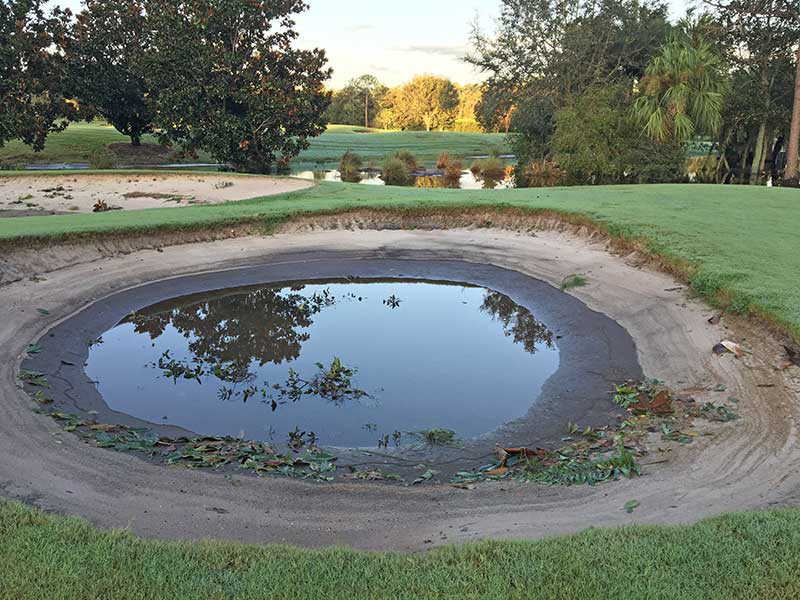
Hawk’s Landing superintendent Joshua Kelley says it took a week for the water to drain out following damage from Hurricane Irma in 2017. (Photo: Joshua Kelley)
Orlando World Center Marriott had planned to renovate bunkers at Hawk’s Landing Golf Club in 2021. But when Hurricane Irma hit Orlando in 2017, the course had to act much sooner than planned, says Josh Kelley, superintendent of grounds for Orlando World Center Marriott and Hawk’s Landing Golf Club.
“Our bunkers were severely contaminated with dirt and silt from the edges collapsing and other contaminates blowing or washing in, as well as filled with water,” he says. “It took about a week for the water in the bunkers to drain out, which told us the drainage had been compromised, which we later confirmed through inspection of the tiles.”
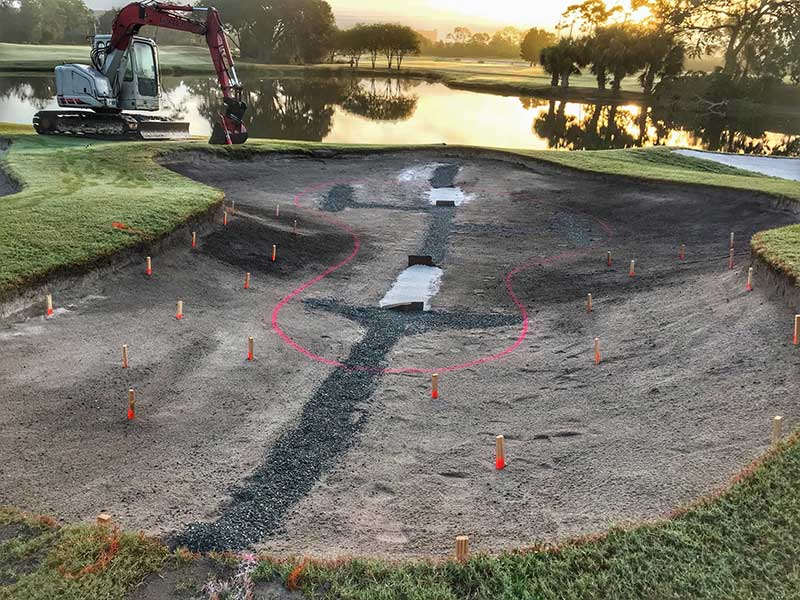
The team at Hawk’s Landing, with the assistance of Bobby Cupp Jr., reduced the total square feet of bunkers by 12,634 during the renovation. (Photo: Joshua Kelley)
Once insurance approved restoration to pre-Irma bunkers, Kelley worked with Bobby Cupp Jr., with Bob Cupp, Inc., to identify bunkers that could be removed or changed.
“We saw this as an opportunity to address some issues in maintenance, aesthetics, as well as playability,” Kelley says.
They removed 14 bunkers and reduced the size of two, a total reduction of 12,634 square feet. A couple of bunkers were removed that seemed at first glance to be the right thing to do, but, in hindsight, Kelley says, helped orient golfer’s shots. So, perhaps they were more helpful than originally thought.
“When you start removing those bunkers, then the golfer doesn’t have as much direction, or maybe he can’t see the other bunkers, so that bunker was giving a hint away to the golfer, and then we took that away. And then, from the tee, you can only barely see the other bunkers. So, it’s just not as obvious of where they should hit the ball,” he says.
Kelley says they completed an abbreviated trial of a couple of bunker liners and ended up selecting a concrete liner. The course selected a hybrid application to help keep the bottom of the bunkers dry and to cut costs.
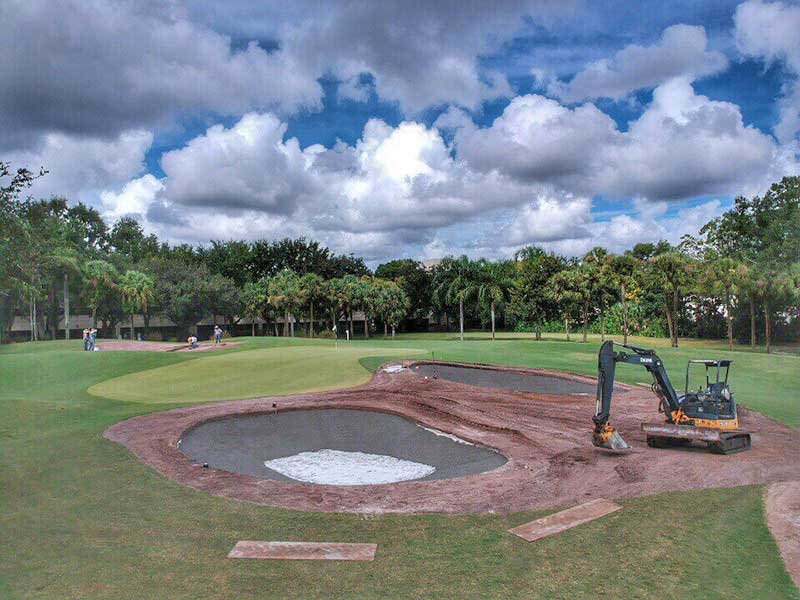
Joshua Kelley, superintendent of Hawk’s Landing says the bunkers applied concrete to line the sides but left the bottom bare to help with drainage. (Photo: Joshua Kelley)
“We did what’s become very common with the new installations, leaving the very bottom open,” he says. “We just did Capillary Concrete on the faces, maybe 60 percent Capillary Concrete and 40 percent open to save money, and then it also just keeps the bottoms of the bunker drier.”
Kelley encourages superintendents undergoing a bunker renovation to make sure sand comes from the same mine. The supplier for their project changed plants mid-project, and the difference was noticeable.
“In one bunker you might have two or three trucks of sand in one bunker, and if they all don’t match, then it’s going to look odd,” he says. “Even though it was all meeting the same specs — and basically what they’re calling the same type of sand — we started getting these loads, and the color, it was white, but it was off white and not egg white.”
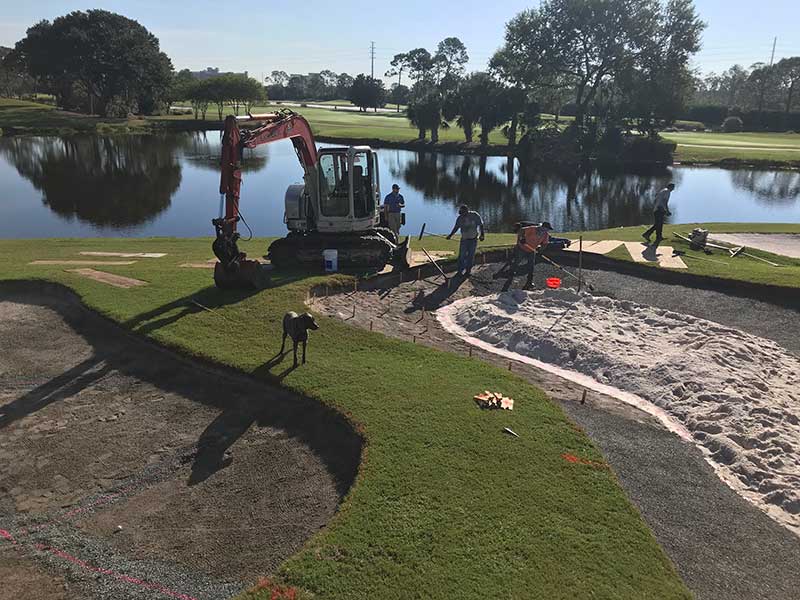
Joshua Kelley says one other step superintendents might overlook is to ensure that bunker sand comes from the same mine to ensure color consistency. (Photo: Joshua Kelley)
One extra step he took was to add wires on the laterals in the bunker to help identify and trace every drainage tile.
“Some would say that’s overkill, but it’s only overkill until you need it,” he says.









